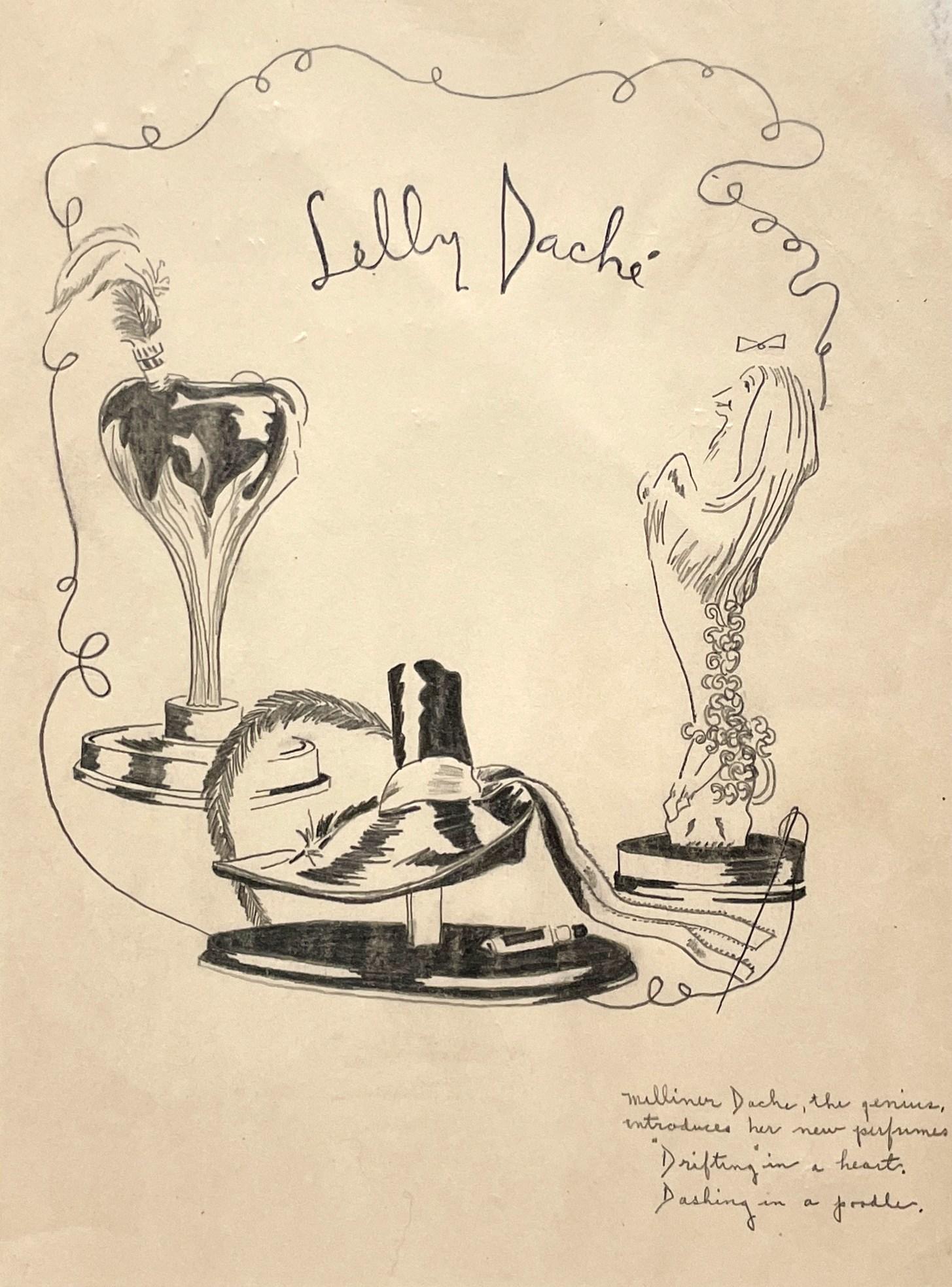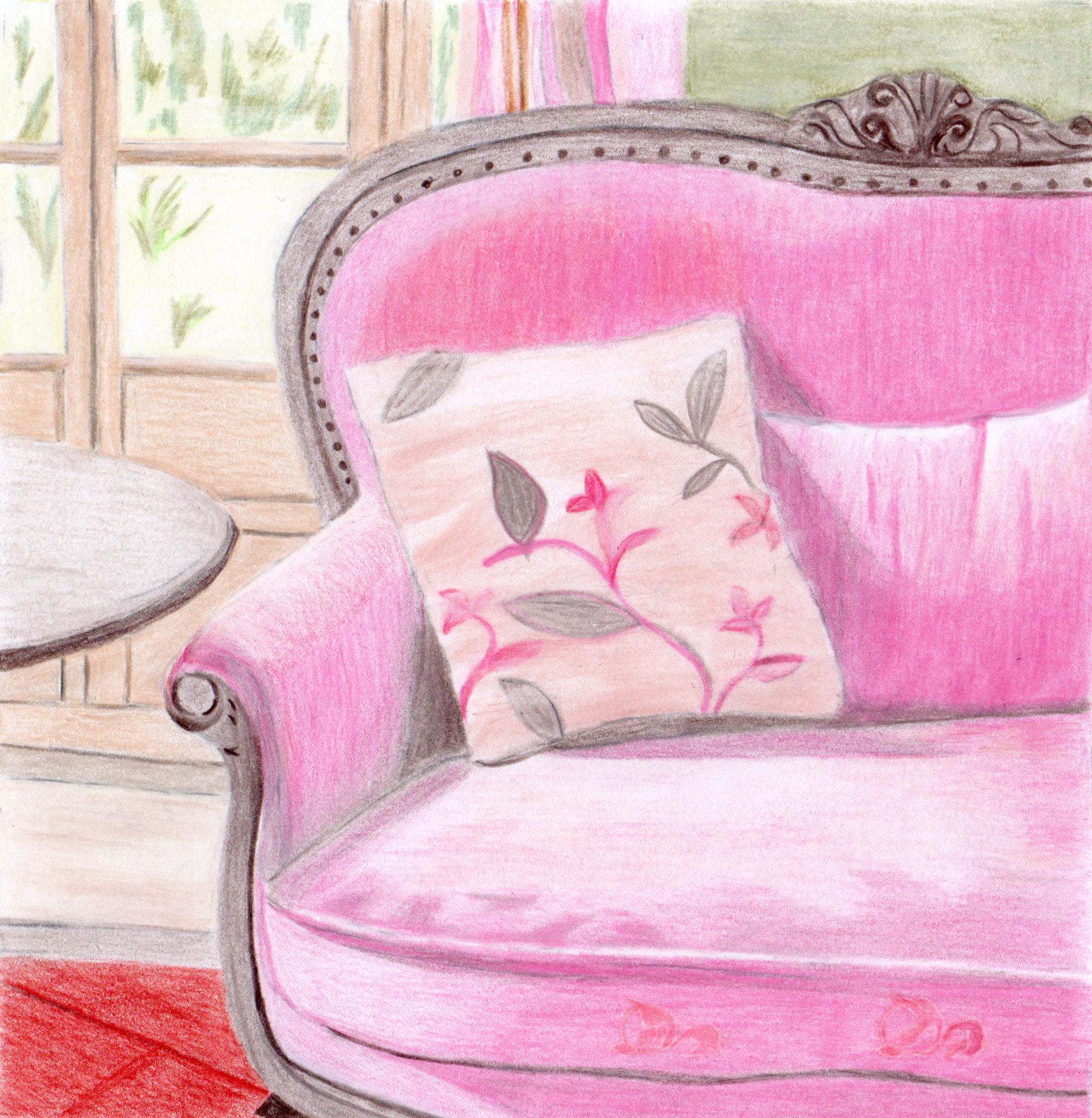Items Similar to 1940s Fashion Study for a 1940s Fashion Study Featuring Elizabeth Arden
Want more images or videos?
Request additional images or videos from the seller
1 of 5
Unknown1940s Fashion Study for a 1940s Fashion Study Featuring Elizabeth Ardenca. 1940s
ca. 1940s
About the Item
An early 1940s fashion study featuring an advertisement for Elizabeth Arden. Provenance: Cornelia Steckl-Jurin, Founder of the Fashion Department at the School of the Art Institute of Chicago.
- Creation Year:ca. 1940s
- Dimensions:Height: 11.75 in (29.85 cm)Width: 0.25 in (6.35 mm)Depth: 8.75 in (22.23 cm)
- More Editions & Sizes:Matted to: 12" x 16"Price: $350
- Medium:
- Movement & Style:
- Period:
- Condition:See Photos.
- Gallery Location:Chicago, IL
- Reference Number:
About the Seller
No Reviews Yet
Vetted Seller
These experienced sellers undergo a comprehensive evaluation by our team of in-house experts.
Established in 2000
1stDibs seller since 2023
9 sales on 1stDibs
Typical response time: <1 hour
- ShippingRetrieving quote...Ships From: Chicago, IL
- Return PolicyThis item cannot be returned.
More From This SellerView All
- 1940s Fashion Study of an Advertisement for Elizabeth Arden at Marshall FieldLocated in Chicago, ILAn early 1940s fashion study featuring an advertisement for Elizabeth Arden "Safari" Nail Polish at Marshall Field & Company. Provenance: Cornelia Steckl-Jurin, Founder of the Fas...Category
1940s Art Deco Still-life Drawings and Watercolors
MaterialsWatercolor, Pencil
- 1940s Fashion Study Featuring an Advertisement for Lilly Daché PerfumesLocated in Chicago, ILAn early 1940s fashion study featuring an advertisement for Lilly Daché Perfume. Provenance: Cornelia Steckl-Jurin, Founder of the Fashion Department at the School of the Art Instit...Category
1940s Art Deco Still-life Drawings and Watercolors
MaterialsPencil
- Still LifeBy Stanley BieleckyLocated in Chicago, ILA Cubist black & white graphite drawing of fruit by artist Illinois and Michigan artist Stanley Bielecky.Category
1940s American Modern Drawings and Watercolor Paintings
MaterialsGraphite
- Still Life with Hammer, Palette and ChopperBy Jan MatulkaLocated in Chicago, ILA graphite on pencil drawing of Surrealist still life of an egg beater by artist Jan Matulka. A leading Modernist, Jan Matulka was born in Prague Czechoslo...Category
1930s Modern Still-life Drawings and Watercolors
MaterialsGraphite, Paper
- Still Life with Alarm Clock and MandolinBy Jan MatulkaLocated in Chicago, ILA graphite on pencil drawing of Surrealist still life of an egg beater by artist Jan Matulka. A leading Modernist, Jan Matulka was born in Prague Czechoslo...Category
1930s Modern Still-life Drawings and Watercolors
MaterialsGraphite, Paper
- Still Life with Profile and HangerBy Jan MatulkaLocated in Chicago, ILA graphite on pencil drawing of Surrealist still life of an egg beater by artist Jan Matulka. A leading Modernist, Jan Matulka was born in Prague Czechoslo...Category
1930s Modern Still-life Drawings and Watercolors
MaterialsGraphite, Paper
You May Also Like
- Original art deco tea and coffee pot design by Erte, Romain de TirtoffBy Erte - Romain de TirtoffLocated in Petworth, West SussexRomain de Tirtoff, called ERTE (Russian/French, 1892-1990) Tasse a Café et Bol a The Ink, gold paint and watercolour with pencil Inscribed with detai...Category
20th Century Art Deco Still-life Drawings and Watercolors
MaterialsInk, Watercolor, Pencil
- Two Wood Ducks on a Flowering BranchBy Joseph StellaLocated in New York, NYJoseph Stella was a visionary artist who painted what he saw, an idiosyncratic and individual experience of his time and place. Stella arrived in New York in 1896, part of a wave of Italian immigrants from poverty-stricken Southern Italy. But Stella was not a child of poverty. His father was a notary and respected citizen in Muro Locano, a small town in the southern Appenines. The five Stella brothers were all properly educated in Naples. Stella’s older brother, Antonio, was the first of the family to come to America. Antonio Stella trained as a physician in Italy, and was a successful and respected doctor in the Italian community centered in Greenwich Village. He sponsored and supported his younger brother, Joseph, first sending him to medical school in New York, then to study pharmacology, and then sustaining him through the early days of his artistic career. Antonio Stella specialized in the treatment of tuberculosis and was active in social reform circles. His connections were instrumental in Joseph Stella’s early commissions for illustrations in reform journals. Joseph Stella, from the beginning, was an outsider. He was of the Italian-American community, but did not share its overwhelming poverty and general lack of education. He went back to Italy on several occasions, but was no longer an Italian. His art incorporated many influences. At various times his work echoed the concerns and techniques of the so-called Ashcan School, of New York Dada, of Futurism and, of Cubism, among others. These are all legitimate influences, but Stella never totally committed himself to any group. He was a convivial, but ultimately solitary figure, with a lifelong mistrust of any authority external to his own personal mandate. He was in Europe during the time that Alfred Stieglitz established his 291 Gallery. When Stella returned he joined the international coterie of artists who gathered at the West Side apartment of the art patron Conrad Arensberg. It was here that Stella became close friends with Marcel Duchamp. Stella was nineteen when he arrived in America and studied in the early years of the century at the Art Students League, and with William Merritt Chase, under whose tutelage he received rigorous training as a draftsman. His love of line, and his mastery of its techniques, is apparent early in his career in the illustrations he made for various social reform journals. Stella, whose later work as a colorist is breathtakingly lush, never felt obliged to choose between line and color. He drew throughout his career, and unlike other modernists, whose work evolved inexorably to more and more abstract form, Stella freely reverted to earlier realist modes of representation whenever it suited him. This was because, in fact, his “realist” work was not “true to nature,” but true to Stella’s own unique interpretation. Stella began to draw flowers, vegetables, butterflies, and birds in 1919, after he had finished the Brooklyn Bridge series of paintings, which are probably his best-known works. These drawings of flora and fauna were initially coincidental with his fantastical, nostalgic and spiritual vision of his native Italy which he called Tree of My Life (Mr. and Mrs. Barney A. Ebsworth Foundation and Windsor, Inc., St. Louis, illus. in Barbara Haskell, Joseph Stella, exh. cat. [New York: Whitney Museum of American Art, 1994], p. 111 no. 133). Two Wood Ducks...Category
20th Century American Modern Still-life Drawings and Watercolors
MaterialsColor Pencil
- Mantel ClockLocated in Houston, TXFrench watercolor and pencil of ornate clock, circa 1930. Original artwork on paper displayed on a white mat with a gold border. Archival plastic sleev...Category
1930s Still-life Drawings and Watercolors
MaterialsPencil, Watercolor
- Intérieur Provence, Realistic Figurative original Drawing, Colorful, InteriorLocated in AIX-EN-PROVENCE, FRColoured Pencils and pastel on Hahnemühle paper - Realistic Figurative original Drawing, Colorful, Interior. Work Title : Intérieur Provence Artist : Gabriel Riesnert...Category
21st Century and Contemporary Contemporary Interior Drawings and Waterco...
MaterialsWatercolor, Archival Paper, Color Pencil, Pastel
- William Shackleton - Camellia, pencil and watercolour by British SymbolistBy William ShackletonLocated in London, GBWILLIAM SHACKLETON, NEAC (1872-1933) Camellia, Kew Signed, extensively inscribed and dated ‘98 Pencil and watercolour Framed 33.5 by 27 cm., 13 ¾...Category
Late 19th Century Realist Still-life Drawings and Watercolors
MaterialsWatercolor, Pencil
- Potatoes, or, Everything is Everything VLocated in Toronto, ONAmanda Nedham collapses the monumental and the mundane through radical memorial gestures. She is interested in how drawing intersects with architecture and is subject to change. In h...Category
2010s Contemporary Still-life Drawings and Watercolors
MaterialsPaper, Graphite
Recently Viewed
View AllMore Ways To Browse
The Atlantic Sailing Yacht
Spring Corot
British Railway Cambridge
Lynn Savarese Photographs
Sculptural Lam
Cowdray Park
Loch Ness Painting
Moon Tickets
Ben Salem
Fred Sargent
My Auction Win
Romare Bearden Quilting Time
Spanish Carnival Poster
Eisendieck Suzanne
Erte Femme
Frederick Childe Hassam
Andrew Wyeth Signed And Numbered Prints
Mantis B1




